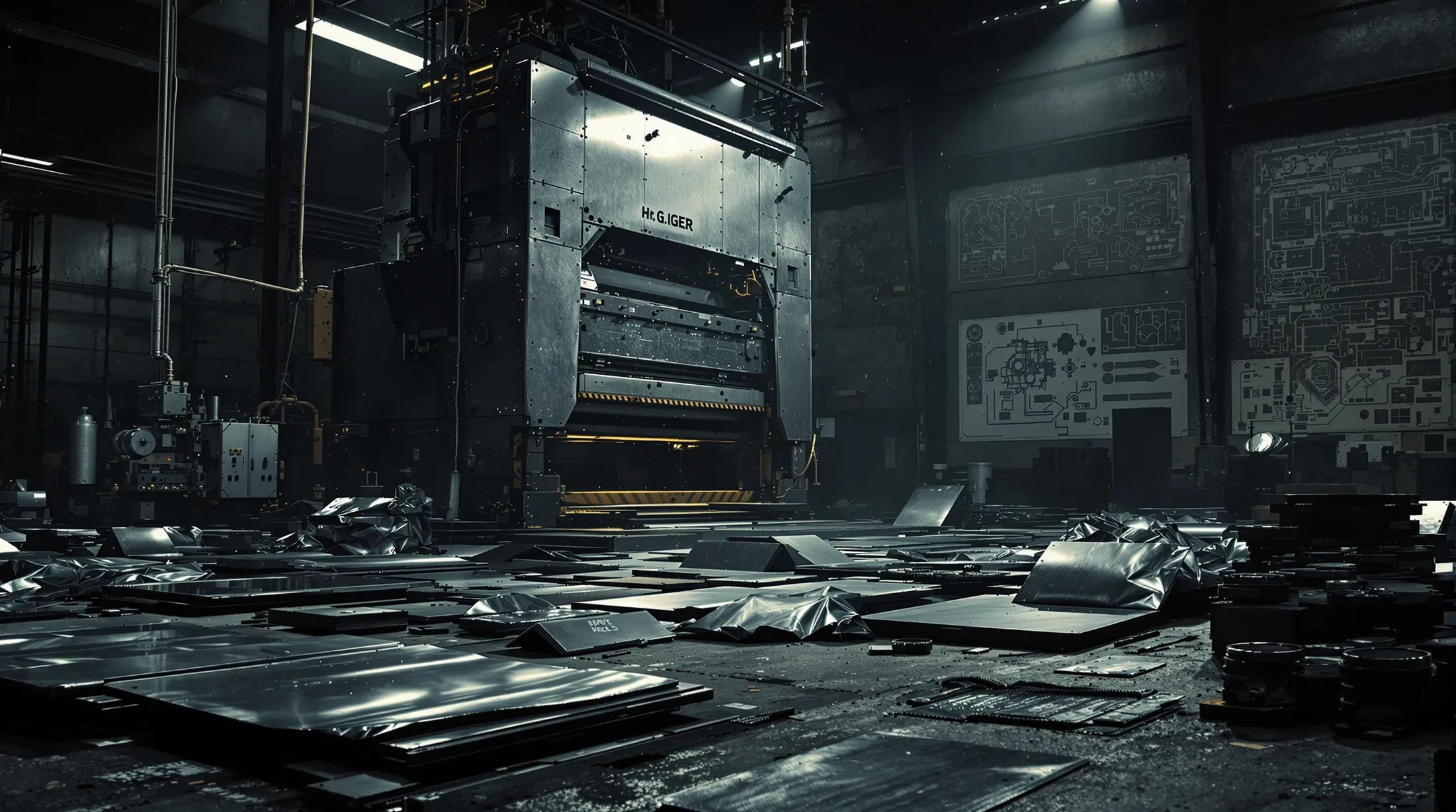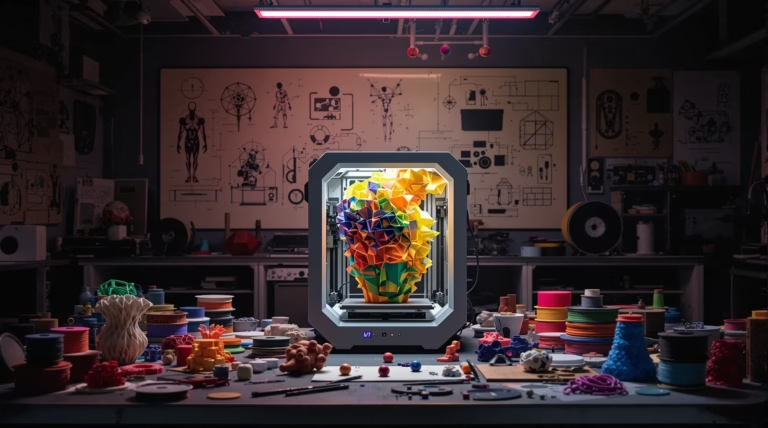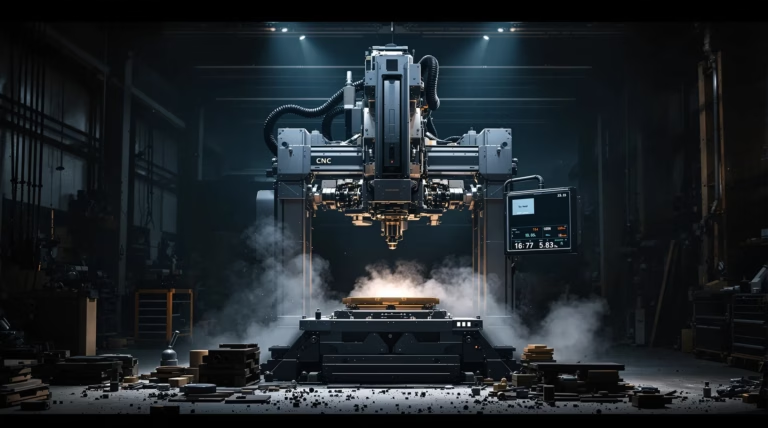Metal Stamping: A Comprehensive Guide to Techniques and Applications
Discover the transformative world of metal stamping, where precision engineering meets industrial efficiency to create everything from tiny electronic components to robust automotive parts. This comprehensive guide explores the evolution, techniques, and applications that make metal stamping a cornerstone of modern manufacturing.
Understanding Metal Stamping
Metal stamping transforms flat sheet metal or coils into precisely shaped components through controlled pressure and specialized tooling. This versatile fabrication technique combines precision engineering with industrial efficiency, producing complex parts at high volumes while maintaining tight tolerances and consistent quality.
What is Metal Stamping?
Metal stamping utilizes dies to transform sheet metal into specific shapes and forms through a series of operations including:
- Cutting and shaping flat metal sheets
- Applying tremendous force through stamping presses
- Creating complex geometries in single or progressive stages
- Producing hundreds to thousands of identical parts per hour
- Minimizing material waste through efficient processes
History and Evolution of Metal Stamping
| Era | Development | Impact |
|---|---|---|
| Ancient Times | Manual hammering techniques | Basic metal shaping for coins and jewelry |
| Industrial Revolution | Mechanized presses | Increased consistency and production capacity |
| Early 20th Century | Hydraulic and mechanical power presses | Enhanced force capabilities and speeds |
| Late 20th Century | CNC technology integration | Automated precision control |
| Present Day | Digital modeling and robotics | Unprecedented precision and efficiency |
Key Techniques in Metal Stamping
Metal stamping encompasses various specialized techniques, each offering unique capabilities for creating precisely formed components. The selection process considers part geometry, material properties, required tolerances, and production volumes.
Progressive Die Stamping
Progressive die stamping represents the pinnacle of high-volume metal forming efficiency. This technique employs sequential stamping stations within a single die set, where each station performs specific operations as the metal advances through the press. Benefits include:
- Rapid production rates exceeding hundreds of parts per minute
- Consistent quality through automated processes
- Reduced labor costs
- Excellent repeatability for high-volume production
- Capability to produce intricate parts with tight tolerances
Deep Draw Stamping
Deep draw stamping creates components with significant depth relative to their diameter or width. This specialized process involves careful material flow control and often requires multiple stages for complex components. The technique excels in producing:
- Automotive fuel tanks
- Kitchen sinks
- Beverage cans
- Ammunition casings
- Components with seamless construction
- Parts requiring uniform wall thickness
Fourslide Stamping
Fourslide stamping, also known as multi-slide stamping, represents a revolutionary departure from traditional press-based methods. Unlike conventional approaches that rely on single-direction force application, fourslide machines employ four independent slides working in concert to shape metal from multiple angles simultaneously. This innovative configuration enables complex forming operations that can accomplish multiple tasks in a single cycle.
- Simultaneous bending and twisting operations
- Multi-directional shaping capabilities
- Enhanced precision for intricate geometries
- Flexible tooling adjustments during production
- Cost-effective for medium-volume runs
Short Run Stamping
Short run stamping provides an efficient solution for low to medium volume production needs, typically ranging from hundreds to several thousand parts. This technique employs simplified tooling designs that balance quality and precision with economic viability, making it ideal for prototypes and specialty components.
- Reduced initial tooling investments
- Accelerated time-to-market capabilities
- Enhanced design modification flexibility
- Hybrid approaches combining CNC and conventional techniques
- Optimal for medical device and aerospace applications
Materials Used in Metal Stamping
Metal stamping processes accommodate an extensive range of materials, from basic metals to specialized alloys. Material selection critically influences process parameters, tool design, and final component performance. Manufacturers evaluate formability, tensile strength, hardness, and cost-effectiveness to determine the optimal material for specific applications.
Common Metals in Stamping
| Metal Type | Key Properties | Primary Applications |
|---|---|---|
| Aluminum | Lightweight, corrosion-resistant, highly formable | Automotive, aerospace components |
| Steel Alloys | High strength, durability | Structural components, appliance frames |
| Copper/Brass | Excellent conductivity, thermal properties | Electronic components, connectors |
| Beryllium Copper | High strength, superior conductivity | Aerospace, defense applications |
Role of Lubricants in Stamping
Lubricants serve as essential components in metal stamping operations by minimizing friction between workpieces and tooling surfaces. This crucial function prevents material tearing, reduces tool wear, and enables complex forming operations that would otherwise be impossible.
- Traditional mineral and plant oil-based formulations
- Advanced polymer-based synthetic lubricants
- Environmental-friendly water-based solutions
- Graphite suspensions for specialized applications
- Soap-based compounds for specific metal types
Applications of Metal Stamping
Metal stamping stands as a cornerstone manufacturing process across multiple industries, delivering precise, repeatable components at scale. This versatile technique transforms flat metal sheets into complex, functional parts through specialized dies and powerful presses, combining accuracy, consistency, and cost-effectiveness unmatched by other manufacturing methods. The process excels in maintaining tight tolerances while sustaining high production rates—essential qualities in modern manufacturing environments.
- Transportation and healthcare applications
- Consumer electronics integration
- Industrial equipment manufacturing
- High-volume production capabilities
- Specialized short-run applications
- Advanced automation integration
- Sophisticated die design implementation
Automotive Industry
| Component Type | Application | Manufacturing Process |
|---|---|---|
| Exterior Components | Hoods, doors, fenders | Transfer dies, tandem line |
| Structural Elements | Crash protection, chassis parts | Progressive die stamping |
| Small Components | Brackets, clips, connectors | Progressive die stamping |
Aerospace Industry
The aerospace sector employs metal stamping for producing critical components that demand exceptional precision, weight optimization, and reliability. Aircraft manufacturers create components ranging from engine parts to structural supports, working with specialized alloys including titanium, Inconel, and heat-resistant stainless steels.
- Comprehensive inspection protocols
- Material traceability requirements
- Advanced forming simulation software
- Precision fine-blanking techniques
- Multi-axis stamping capabilities
Medical Devices
The medical device industry leverages precision metal stamping for components meeting stringent healthcare standards. Manufacturing occurs in clean-room environments, utilizing biocompatible materials like stainless steel and titanium.
- Surgical instruments and implantable devices
- Diagnostic equipment components
- Medical equipment housings
- Micro-stamped parts for minimally invasive procedures
- Automated inspection systems
- Custom tooling solutions
Tools and Equipment in Metal Stamping
Metal stamping operations rely on sophisticated tools and equipment designed to handle significant forming forces while maintaining precise tolerances. The spectrum ranges from basic manual stamps to complex automated systems, representing critical infrastructure investments for manufacturers.
- Traditional mechanical presses
- Advanced servo-driven systems
- Computer-controlled equipment
- Specialized die designs
- Material handling automation
- Quality control instrumentation
Stamping Presses and Dies
Stamping presses serve as the backbone of metal stamping operations, generating tremendous force to form and cut sheet metal into desired configurations. These machines come in various designs, each offering distinct advantages for specific applications.
- Mechanical presses – utilize motor-driven flywheel and crankshaft mechanisms for high-speed, precise production
- Hydraulic presses – employ fluid pressure for flexible stroke length and force control
- Servo-electric models – combine precision with programmable motion control
The dies used in stamping operations represent highly engineered tooling systems custom-designed for specific components. These precision tools consist of mating upper and lower sections that work together to perform cutting, bending, and forming operations.
| Die Component | Function |
|---|---|
| Punches | Create holes and external features |
| Progressive dies | Enable multiple sequential operations |
| Lower die sections | Provide corresponding openings for forming |
Advanced Stamping Tools
Modern metal stamping incorporates sophisticated technologies that enhance manufacturing capabilities beyond conventional operations. Computer Numerical Control (CNC) machining has revolutionized die making, enabling the creation of complex geometries with exceptional precision.
- Wire Electrical Discharge Machining (EDM) for precise tool steel cutting
- Four-slide machines for complex multi-directional forming
- In-die sensors for real-time process monitoring
- Automated material handling systems
- Advanced metrology systems for quality control
Future Trends in Metal Stamping
The metal stamping industry continues to evolve rapidly, driven by technological advancements and changing manufacturing demands. Digital transformation is revolutionizing operations through smart manufacturing principles, predictive analytics, and real-time monitoring systems. These developments enable unprecedented levels of control and optimization throughout the stamping process.
Microstamping and Miniaturization
- Specialized micropunching machines for microscale components
- Advanced vision systems for quality control
- Novel die designs for micro-scale material behavior
- Production of components with sub-millimeter dimensions
- Integration with electronic and medical device manufacturing
Sustainability in Metal Stamping
| Innovation | Environmental Benefit |
|---|---|
| Closed-loop material recovery | Reduced raw material consumption |
| Regenerative drives | 30% reduction in power consumption |
| Water-based lubricants | Elimination of hazardous waste |
| Optimized die design | Minimized material waste |







